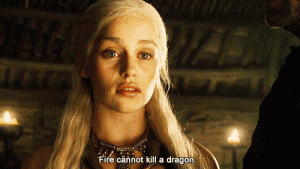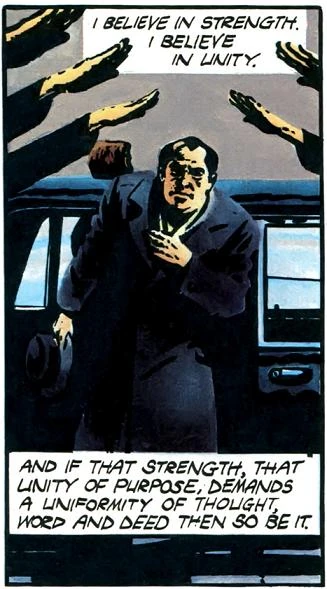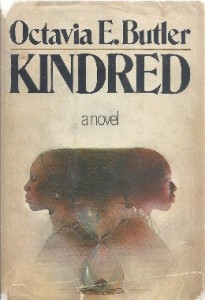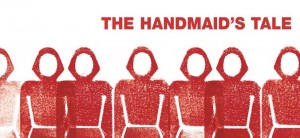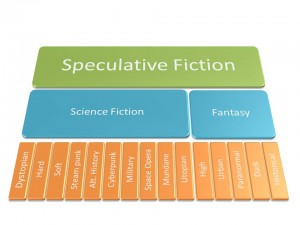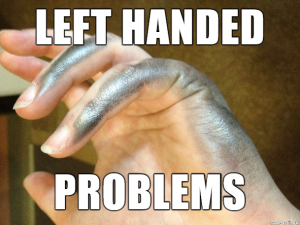What makes an author give their characters the personality traits that they do? Generally speaking, in every book that you read or film that you watch there is one distinguishable trait that you fall in love with that the main protagonist has. This could be some special power that they have, or a personality quirk, or even a scar (yes, I am talking about you, Harry Potter). One of the key traits that writers quickly distinguish is if that particular characters is going to be portrayed as masculine or feminine. Masculinity is defined as having qualities or appearance traditionally associated with men, especially strength and aggressiveness. While femininity is defined as having qualities or appearance traditionally associated with women, especially delicacy and prettiness.
In our society, it is typically frowned upon for women to come off as masculine and for men to have any sort of feminine side. Men are considered weak if they show any sort of femininity in their actions or thought process, just as women are considered to be less of a woman if they display any sense of masculinity. However, how is it that if you look at different genres of film and literature that the masculine and feminine roles are often reversed from that of which would be expected and celebrated throughout our society? Writers use the gender roles that we have established in our lives and spheres of the world in ways that are different than what we would typically see in order to get a point across or to support a social movement. By exploring the different ways in which speculative fiction authors use gender as a tool, one can see the different types of points they are trying to get across.
Gender and the way that it is portrayed has a monumental effect on how the entire story or plot line will evolve. For example, with a stereotypical gender placement it is easy to envision how the story will go. This leads to twists, turns, and plot twists to be a lot more predictable because it will follow the same pattern as every other gender normal story that there is. However, speculative fiction writers bend and twist these gender norms in able to create a more thrilling, suspenseful, and exciting story for all parties involved.
Generally speaking, there is a pattern or theme for every gender stereotypical reading that is available to the public eye. In most readings with a conventional female protagonist the story is about her love life, or lack thereof. The plot will then thicken with some sort of melodrama that escalates into some sort of life changing romance. The new couple will then ride off into the sunset, seeming as though they have faced no hardships along the way, at least nothing that was out of the ordinary for the reader. Following the story of a typical male protagonist, the reader typical follows one of two stories. The first being another romantic genre type of story where the man has been wronged by so many women, or been misunderstood, but he finally finds true love and happiness after overcoming some drastic hardship in getting there, while still maintaining the male identity. This is much like the typical female protagonist story. The second story line is one that is full of adventure and strength, and just all around masculinity. This plot line, as well as the other two that have been mentioned, are all very predictable and stale. They might be good stories and keep the reader entertained for a portion of their time, but it will never be a story that truly sticks out in their mind. That is a gift that speculative fiction writers have.
It is often wondered why writers place their characters at such drastically far ends of the spectrum. A female character typically cannot just be a little tomboyish in order to satisfy the writer. She has to be completely defeminized and sometimes seemingly unfeeling to help prove or fulfill the point that the author is trying to make. The same type of situation goes for male characters as well. They are portrayed as being extremely emotional and in touch with their feelings. This type of male character is most popularly seen in the romance genre, but there have been traces of this sort of character in the speculative fiction genre as well. Often times, there will be two parallel characters either within the same series or same general universe that portray these two types of female and male roles.
The first example of these parallel characters comes from the Marvel Cinematic Universe in the forms of Jessica Jones and Matt Murdock (aka Daredevil). Jessica Jones is a dry humored alcoholic who just so happened to gain super strength after she was involved in a bad car accident when she was younger. Immediately from the first episode of the Netflix original series “Jessica Jones”, Jessica is portrayed as a very masculine woman. This is not shown so much in her physical appearance, as the actress is a very petite woman, but in her physical and emotional demeanor. Jones is very standoffish, rude, and straight to the point. She also is a borderline alcoholic and her drink of choice is whiskey, which is more typically known to be a man’s drink of choice. She is not very “lady like” in the slightest- she uses her fists more often than her words and when she does use her words it is not without a strand of obscenities. Jessica Jones is absolutely the type of person who would rather fight and punch the answers out of someone, rather than first trying to talk to the person and figure out what is going on. While it is seen briefly in the show, Jessica is not focused on her love life, unlike the stereotypical female protagonist. Yes, there are some instances in which she is taken off guard by a certain gentleman, but she stays extremely focused on her plan and end goal throughout the entirety of season one of the show. In your typical female protagonist there would have been a huge breakup/makeup portion that took up two episodes just to envelop all of the drama. This is not the case with Jessica Jones.
Matt Murdock is the stare of the Netflix original series “Daredevil”. Matt is blinded in a chemical spill when he is a young boy, so from the beginning he is already in a vulnerable state compared to that of the other men he is around. Matt is very much against killing, which already differs him from the ever violent Jessica Jones, and has a softer side about him. He is very involved with people’s lives and tries do what is best by everyone in any given situation. When he is not saving the world as Daredevil, he is saving the lives of innocent people as a lawyer. Matt will take any case, even if it seems like he has no chance of winning, if he believes that the person is telling the truth. That goes to say something about the heart of this man. We also see a very different and emotional side of him when we are introduced to the Nurse. This is the romantic aspect that we are missing from Jessica Jones, which is just another tally under the feminine column for Matt Murdock.
The Hunger Games is another series in which there are two parallel characters that display masculinity and femininity in the opposite sex. Katniss Everdeen, “The Girl on Fire”, is a one hundred percent tomboy. Not so much because of that is how she wanted to be, but that is what her circumstances molded her to be. After her father died, leaving behind herself, her mother, and her sister, Katniss adopted the role of “man of the house”. This meant that she had to learn how to be one of the guys. Meaning that Katniss had to learn how to hunt, fish, trap, kill, and be the overall provider for her family. She did not, as her sister did, learn how to cook or heal people. Katniss is also very blunt and does not have the overall girly charm that most women, especially the women in her family, seem to have. She comes off as unfeeling, hard, rude, and just a generally dislikable person. Her entire upbringing and demeanor is the complete opposite of her counterpart Peeta Mellark. After being thrust into The Hunger Games, her demeanor while she is in the arena does not vary far from her demeanor outside of it. The only time that we see her act more feminine while she is competing in the games is when she pretends to fall in love with Peeta, but this too is just a ploy in her ultimate plan to try and stay alive.
Peeta Mellark is the antithesis of Katniss Everdeen. He is very kind, trusting, giving, and loving. He also has the ability to charm just about anyone that he has an interaction with. Peeta was raised as the baker’s son, so when Katniss was out in the woods foraging for food, Peeta was in the kitchen baking. This is the complete reversal of the gender stereotypes that our society is accustomed to. Peeta is very much so the sensitive one in the relationship that he and Katniss share; he opens up conversations to get to know her better, he can recall the way he felt about Katniss as a school boy, and he ultimately fall in love with her. These are all traits that readers would expect Katniss to have, but the speculative fiction genre never fails to ignore these gender norms. While being thrust into The Hunger Games forces Peeta to act in a much more masculine way, but this was only because he could have lost his life if he did not step up and fulfill a more masculine role. However, it is still clear to the audience that Katniss is actually the more cunning and masculine person out of the pair of them.
Lastly, Star Wars: Episode VII- The Force Awakens. The two characters that are at opposite ends of their gender spectrum here are Finn and Rey. Rey is an orphaned young woman living by herself in the harsh desert land of Jakku. She survives and makes her living by scavenging the land for anything useful that she can trade in for rations. From the start, Rey is a very tough acting girl and the viewer learns that it is not just an act, but something she had to become due to the circumstances that were thrust upon her. She is not one to shy away from conflict and is not one opposed to using her fists to solve problems in opposed to her words. It is later learned that she has the power of “The Force” within her. This in itself was a major shock to the cinematic audience because all of the viewers expected Finn to be the new Jedi, when in fact it is the meek and petite girl who holds all of the power.
Finn, for much of the movie, is on an emotional roller coaster. He was taken from his family as a baby to be trained and become a storm trooper for the republic. In the opening scene of the film, the audience watches Finn freeze up and become immobilized when he witnesses one of his best friends being killed. This serves as a clue as to Finn’s sensitive nature and demeanor. The audience gets another peek as to the type of person that Finn is whenever he is trying to help another character escape from prison. As soon as things start to get tricky, Finn wants to desert the people that he had been trying to help and run so that he can save himself. Finn is ultimately the most sensitive one out of the group that he is working with. This ultimately makes him seem much more feminine and makes Rey appear to be a lot more masculine than him.
Speculative fiction authors have a way of bending the gender stereotypes in a way that creates a new and exciting story. Speculative fiction authors are constantly testing the boundaries and limits of their writings and doing away with gender norms is one way in which they accomplish this. Authors take the typical gender norms and stereotypes and throw them out of a metaphorical window. In doing this, it opens the door full of possibilities that the author can test out and explore. The writer is no longer bound to certain expectations just because he/she decided to cast the character as a male or female. Speculative fiction authors have proven that a masculine female protagonist can sell just as many books and be just as entertaining as a masculine male protagonist. On the flip side of that spectrum, the same can be said about feminine males; feminine male protagonists can hold their own against feminine female protagonists. By throwing out the typical story lines, speculative fiction authors are constantly surprising and confounding their readers.
One way in which speculative fiction authors manage to keep readers and avid fans on their toes is by producing new literature and plot lines that have not been thought of before. An example is this is by writing about societies in which there is no gender; androgynous societies. By creating works of fiction where there is an androgynous society, speculative fictions authors create a space where they can create whatever type of world that they want to. This could be a society in which they wish our world was, one that they think we are headed towards, or it could be one designed to argue a point. Whatever the case, by creating these new androgynous worlds, the author is able to formulate the exact type of what that he or she desires. The author does not have to give any sort of thought to gender stereotypes because in that world in which they have created there is no gender to stereotype. By eliminating gender completely, speculative fiction authors give themselves the opportunity to fully unlock their creative potential and give the readers the type of story that they wish every genre had.
An example of a piece of speculative fiction that is centered around an androgynous society is Ursula K. Le Guin’s book The Left Hand of Darkness. This work of fiction has won the best science fiction novel of the year in the form of both the Hugo and Nebula awards and is often referred to as, “[A] science fiction masterpiece.” This novel is centered around a man, Genly Ai, who is sent to study the ethnology of the Gethenians on the planet Winter. This society functions very differently than that of which Genly Ai, and the readers, are used to. The citizens of this planet and specific society are androgynous beings, meaning that they have no specific gender and do not understand nor recognize behaviors and stereotypes that are associated with being male and female. The citizens of this society are able to pick and choose whether or not they want to assume the male or female role when it comes time for them to participate in sexual reproduction. Genly Ai, being a resident of Earth, is seen as an oddity on this planet by constantly being a man and never going into the in between stage where he is neither a male or a female. The Left Hand of Darkness was considered one of the first feminist pieces of science fiction. By eliminating gender from this society, Guin was able to examine and address the effects the sex and gender have on culture and society. By eradicating gender and creating an androgynous society, Ursula K. Le Guin was able to create a world in which there are no constrictions caused by gender roles and norms.
Speculative fiction authors mold and shape gender and its stereotypes in a way that makes our society as a whole examine and rethink about the structural framework that we have set in place regarding gender. In fiction pieces such as The Left Hand of Darkness, by removing gender and making the entire society androgynous, we are forced to look at what our society would potentially look like if we did not have those gender roles set in place. By removing gender from the society, we, the readers, are forced to look at what is left. We are forced to imagine how different things might be, how decisions could be made, and we are forced to look at how much gender and sex dictate our society that we live in.
It is also possible to see how gender and sex effect our society by looking at the novels and adaptations of books in which the male and female characters have been given characteristics that do not typically belong to their gender. By doing this, speculative fiction authors force their readers and viewers to face what it is that might make them feel uncomfortable about a character that is so vastly different the conventional male and female characters that we are used to in what we face and see in our day to day lives. Citizens in our society are forced to question whether or not these typical gender roles are true reflections of who we are as not only people of a society, but as individuals as well.
Gender is a key component of the genre that is speculative fiction. Being able to stretch and flex the roles and norms of gender are key factors that aid authors in writing books that are not only entertaining, but thought provoking as well. Even the lack of gender in certain societies is still helpful in examining the flaws that we might have in what we think is an otherwise perfect society. Molding and shaping gender allows for the opening of many various avenues that authors can take in order to make the most thought provoking, while still entertain, works of speculative fiction that they can.


